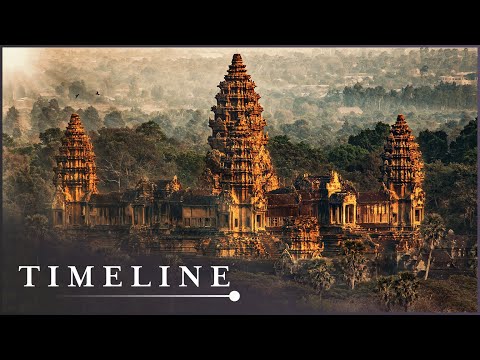
Nestled within the dense jungles of northern Cambodia, the sprawling temple complex of Angkor Wat stands as a testament to the grandeur of the Khmer Empire. Built in the early 12th century by King Suryavarman II, Angkor Wat was initially dedicated to the Hindu god Vishnu, reflecting the empire’s religious beliefs before gradually transforming into a Buddhist site. This majestic structure is not just an architectural marvel; it is a symbol of Cambodia’s heart and soul, revealing tales of divine kingship and celestial alignments that resonate through its corridors and towers.
## Historical Context
Angkor Wat forms just one part of Angkor, the capital city of the ancient Khmer Empire which flourished from approximately the 9th to 15th centuries. At its zenith, this empire covered much of what today is Cambodia, Thailand, Laos, and Vietnam, showcasing sophisticated artistry and advanced understanding of engineering and hydrology.
The construction of Angkor Wat itself is believed to have required thousands of workers and several decades to complete. Intricately carved bas-reliefs adorn its walls, depicting stories from Hindu mythology including the famous Churning of the Ocean Milk. The layout follows a specific cosmological plan designed to represent Mount Meru, home to the devas (gods) in Hindu mythology.
## Architectural Marvel
Angkor Wat distinguishes itself with its grand scale and its unique combination of temples and enclosures which are arranged on three levels — each one elevated above the next. The outer gallery measures an impressive 1.5 kilometers in perimeter and encloses a vast rectangular area that includes libraries, pools, and low-lying buildings. The central sanctuary rises majestically above this base in a series of three rectangular terraces to a height of over 65 meters at its pinnacle.
The precision with which these stones were cut and assembled so seamlessly that even a blade cannot fit between them remains an enduring puzzle for archaeologists. Moreover, it faces West instead of East—a rarity in Hindu architecture—which adds layers to its interpretation as perhaps symbolizing death or reflecting personal spiritual beliefs.
## Religious Significance
Originally intended as a personal mausoleum for King Suryavarman II that would aid his ascent into heaven as well as serve as a temple for Vishnu, Angkor Wat’s alignment with celestial phenomena such as equinoxes serves dual purposes—religious observance and reinforcing king’s divinity—emphasizing his role as bridging earthly realms with cosmic forces.
By the late 13th century, Buddhism became predominant in Khmer culture resulting in additional modifications including new Buddhist artwork mingling with existing Hindu iconography within Angkor Wat’s corridors.
## Interpretations Through Time
European explorers stumbled upon this “lost city” in the mid-19th century; their descriptions painting it as both eerie and enchanting—a rediscovered Eden overgrown by giant trees but filled with sculptures that “must have been executed by gods rather than men”. Since then tourism has exploded particularly after being listed as an UNESCO World Heritage site in 1992 but not without challenges around conservation versus commercialization.
## Conclusion
Today Angkor Wat continues to draw millions from around the globe who marvel at its beauty and ponder over its mysteries. It remains not only a national symbol but also a source pride for Khmer civilization’s legacy—a tangible link between past glories and present aspirations.
From archaeological studies that help decode geographic expansions through satellite imagery to local efforts aimed at preserving this monument for future generations—Angkor Wat stands resilient—an enduring enigma inviting all who dare uncover her secrets spanning time immemorial.
